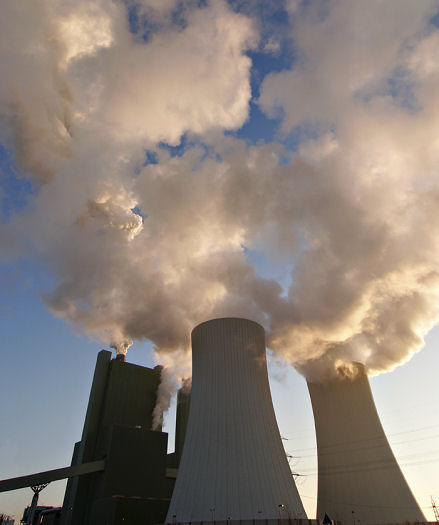Green Investment
Which Industries Are Genuinely Green? ~ By Irina Bright
Green investment is an investment in companies which are actively developing technologies for improving the current state of the environment.
Contents

Introduction
Top Priority Areas
Renewable EnergyAgriculture / Organic Foods
Water Technologies
Green Cars
Green Building
Energy Efficiency
Carbon Emissions Market
Reforestation
Recycling
Other Green Investment Industries
What is NOT Environmental Investment
Types of Environmental Investments
Conclusion
References
___Introduction
So what are the genuine green industries that can develop successful solutions to environmental degradation the world is facing right now?
We know for sure that the use of fossil fuels (i.e. oil, gas and coal) is one of the major causes of environmental pollution and global warming.
It is difficult to imagine an activity that would not utilize fossil fuels in one way or another.
Not only are fossil fuels non-renewable resources, they are also very dirty ones.
For example, fossil fuel combustion is a source of atmospheric emissions of carbon dioxide and methane.
Carbon dioxide and methane are the most powerful greenhouse gases, i.e. the ones which contribute to global warming.
The global warming effects can be truly devastating, ranging from floods and hurricanes to droughts, to name just a few.
Therefore, development of renewable sources of energy should be the top priority target for green investments.
The international renewable energy, as a green industry, has already made huge technological advances, and is continuing to push ahead with the help of private capital as well as various governmental support schemes.
Another large sector is of course agriculture whose main greenhouse gases include methane and nitrous oxide.
Waste management and industrial processes (incl. manufacturing of building materials) are a couple of other sectors which bear their own share of responsibility for producing some greenhouse gases.
Cars and heavy vehicles should also be a serious focus for green investments.
Other interesting green industries to look at are green building, energy efficiency technologies and a newly emerging carbon emissions market.
A huge potential for green investment lies with the forestry industry, especially reforestation projects, as well as the recycling industry.
This is a good framework of the areas which should be considered by green investors for moving their capital into.
We discuss these areas in more detail below.
Top Priority Areas for Green Investment
Renewable Energy
 Solar Panels
Solar Panels
If you ever need to choose only one industry to invest in, put your money into renewable energy.
It is the most important area whose success or failure will determine the state of the Earth’s environment in the future.
There are several types of renewable energy that deserve our special attention.
Solar Energy
Solar energy is the most abundant renewable energy resource on the planet.
Some experts claim that the world's annual energy demand can be met by harnessing solar radiation received by the Earth within just one hour. (Ref. 1)
Solar energy obviously has an enormous potential for green investing and is a fantastic target for environmentally conscious investors.
There are two main types of solar technology on offer:
Thermal solar energy (solar energy is captured to produce heat)
Thermal solar energy can be used for water heating systems, cooling & ventilation systems.
It can also be used to generate electricity indirectly from heat (solar thermal power).
Water heating systems may normally be installed locally for clients’ use while electricity generation requires large areas of land for installation of energy collectors such as special parabolic troughs, dishes and towers.
Photovoltaic solar energy (solar cells are used to convert solar light directly into electricity)
Solar PV is an established technology and has been on the market for a long time.
Photovoltaic solar panels can be installed locally (for example, on buildings’ roof-tops) or remotely (for example, large PV power plants).
Most modern solar panels are silicon-based but due to most recent shortages of silicon production a new photovoltaic technology – thin-film cells – is gaining traction.
It is widely accepted that the success of solar energy development and commercialisation depends on governmental policies, subsidies & other incentives.
This industry is not yet totally ready to compete against traditional electricity resources.
However, as the oil resources are steadily declining, solar energy industry may well start witnessing its real growth much faster than expected.
Wind Energy
Most wind energy is used to generate electricity.
Individual wind turbines may be installed locally to provide electricity for isolated locations as well as for homes, small businesses etc. ("off-grid"), while large wind farms are usually connected to electrical grids. (Ref. 2)

Wind power technology appears to be quite mature, and has been used for many years in different parts of the world.
But like solar energy, wind power faces its own challenges as well.
Wind turbines need to be placed in carefully selected locations with suitable wind characteristics; variability of wind speeds may lead to unpredictability of a wind plant output; many good wind sites are located far from demand and require an additional construction of transmission lines and other capital investments.
Other challenges include aesthetics (large wind turbines covering beautiful landscapes are not always aesthetically pleasant), impacts on animals (birds may be killed by turbine blades), operational accidents (a turbine may disintegrate or catch fire). (Ref. 3)
This green industry also depends on governmental subsidies and other public support measures.
Geothermal Energy
Geothermal energy is the energy generated by the heat located under the surface of the Earth.
It is used mainly to heat buildings and generate electricity.
Even though it does not make regular headlines like solar and wind energy, geothermal power is certainly an interesting source of renewable energy for green investors.
It is widely considered to be clean and safe for the environment, in spite of the fact that geothermal power plants may produce up to 5% of carbon dioxide emissions of a fossil fuel plant. (Ref. 4)
Geothermal energy appears to be getting popular among the international investment community, especially in view of climbing fossil fuel prices.
Biofuels
Biofuels are renewable types of energy derived from biological sources such as plants. They can come in solid, liquid or gas form.
 Corn is not an efficient source of energy
Corn is not an efficient source of energy
One type of biofuel – ethanol – is produced from crops such as sugar cane or corn and can be used as a fuel for traditional cars.
Another type – biodiesel – is produced from oils such as palm oil and can be used as a fuel for diesel cars.
Ethanol and biodiesel are currently the most common types of biofuels.
It is quite a complex area.
While biofuel is considered to be a renewable resource, there are several issues that green investors will need to take into account before making decisions.
First of all, replacement of traditional dirty fossil fuel sources with biofuels is supposed to reduce global warming.
However, it is not totally clear whether the reductions of carbon emissions (global warming agents) realized through production and use of biofuels are actually so significant as to achieve real results in the fight against global warming.
Second, vast areas of rainforests are cleared for biofuel crop plantations in developing countries. This deforestation in itself is a major cause of biodiversity loss and a significant source of carbon emissions.
Third, biofuel crops start competing against food crops for land. This situation gives rise to food shortages around the world.
On the other hand, biofuels do offer some interesting opportunities.
For example, one of the "next-generation" types - algae biofuel - offers a much higher productivity than crop-based biofuels that we've discussed above, and is touted as a great future opportunity for environmental investing. (Ref. 5)
In another example, biofuels may be produced from waste materials. This will not only be a production of additional quantities of renewable energy but will also contribute to “green” waste management.
Weighing all the pros and cons before putting money into this industry should make it clearer if such investments can indeed be called "green investments".
Hydroelectric Power
Though dam-generated hydroelectric power is a renewable source of energy, it may have wide-ranging environmental impacts on the geographical areas where dams are built.
In one word, construction of large dams implies a drastic transformation of nature on a massive scale which may lead to changes in local weather patterns, flooding, destruction of rainforests and many other problems.
Justifiably, environmentalists are very concerned about all these issues.
It is easy to see why large-scale hydroelectric dams are not suitable opportunities for environmental investments.
“Micro-hydropower” however may be a different case.
Agriculture / Organic Foods
 Green Field in Switzerland
Green Field in Switzerland Photo: Reto Fetz
Organic farming requires a lot less energy than conventional farming, uses natural inputs and processes for growing crops, and avoids the use of artificial fertilizers and pesticides and genetically modified organisms.
Organic foods have dramatically risen in popularity over the last several years.
It is not surprising then that such high demand for organic foods would not only mean higher profits for green investors, but also outstanding benefits for the human health and for the wider environment.
As an example, distributors and retailers of organic foods will be among the obvious targets for environmental investing.
Water Technologies
Waste water treatment
Waste water (sewage water) contains vast amounts of energy that may potentially be recovered by wastewater treatment plants and re-used either by plants themselves or elsewhere.
Many wastewater plants already recover a certain percentage of energy from sewage; and this technology may yet become even more efficient as more research is conducted into this field.
This is certainly an area of interest for green investors as waste water may become a significant source of renewable energy in the future.
Another developing technology is recycling waste water back into drinking water.
While this may not immediately sound very hygienic, we know of some municipalities in the US which are already making investments into this sector.
Sustainable water supplies
As the water shortages around the world become all too apparent, there is no doubt that this area will be a very important one in the 21 st century.
Agriculture, industry and residences consume huge amounts of water, and securing sustainable water supplies has already become a big issue both in the US and many other countries.
Investments in water desalination and purification technologies as well as water infrastructure companies will be among those in the spotlight for green investors. (Ref. 6)
Green Cars

Green car investments promise to be a massive hit in the investment community.
Green cars are the vehicles that use renewable sources of energy or consume significantly less gasoline / diesel than traditional oil-powered cars.
There are currently 3 main types of green cars that green investors can look out for:
- electric cars (run on electric motors)
- hybrid cars (electric motors plus traditional internal combustion engines), and
- hydrogen cars (use hydrogen instead of gasoline)
It is undoubtedly one of the most exciting “green” sectors with a promising future.
Green Building
Construction and operation of industrial, residential and office buildings are major sources of environmental pollution and greenhouse gases.
These processes can surely be improved through the most efficient use of energy & raw materials as well as efficient planning. This is known as a green building approach.
You will find more and more stocks of manufacturers of green building materials as well as green construction companies in which in you can invest your money.
Energy Efficiency
Energy efficiency industry offers anything from energy-saving consultancy services to manufacturing of energy-efficient light bulbs, washing machines and cookers, etc.
We have heard of an electricity-saving device that can be easily installed at home and start producing savings of up to 40% off your electricity bills.
We can't help but point out another big green investment area - the smart grid.
Though not strictly an energy efficiency opportunity, the smart grid is an electricity transmission and distribution network that offers consumers advanced technology to manage, much more effectively, their demand for electricity right from their homes.
For example, this system could tell you the time of the day when it would be most cost-effective to run your dishwasher or washing machine, thus saving you the money and saving the planet from more pollution.
Another area worth mentioning is advanced battery technology which would offer more efficient ways of storing and using energy from batteries (for example, in electric cars).
This industry should be of special interest to green investors as it can indeed provide great technological solutions for big problems.
Carbon Emissions Market
The carbon emissions market is a quite new concept.
It is also called a cap-and-trade system.
Its main idea is to bring carbon pollution under control by allowing companies to buy and sell carbon credits through international trading platforms.

For example, Company A is allocated a certain amount of carbon emissions that it is allowed to produce in year 2007. This is a cap component of the system.
If Company A produced less emissions in 2007 than it was allowed to, it can go to the market and sell the rest of these emissions to Company B which happened to produce more carbon emissions in 2007 than it was allowed to. This is a trade component of the system.
Under the Kyoto Protocol, companies and institutions from developed countries are also allowed to create and trade new carbon credits by investing in "green" projects in developing countries.
Such projects (for example, planting a forest) are expected to reduce and remove carbon dioxide and other greenhouse gases from the atmosphere.
We expect to see many green investing opportunities in this sector presenting themselves in the coming years.
Good investment targets will be the companies which will be under-utilizing their emissions credits and selling them on the market. (Ref. 7)
Another interesting example is Generation Investment Management, an investment firm co-founded by Al Gore. This firm invests in green companies which put long-term environmental sustainability at the top of their agenda.
Reforestation
Reforestation is probably the most genuine green industry we can think of.
Like carbon markets, reforestation is an emerging area which has a big potential to attract serious interest from green investors.
You will already be able to find interesting investment products related to reforestation projects.

Basically, such products offer clients a fantastic opportunity to make long-term investments in sustainable timber, a valuable product on international markets.
If you do decide to try your luck here, make sure you invest your money in multi-cultural plantations, and not in mono-cultural ones.
It is a well-known fact that mono-cultural plantations (e.g., teak plantations) are harmful to the environment; whereas multi-cultural ones (i.e., mixtures of many species of trees) aim to benefit both investors and the environment in many different ways.
Since deforestation is a huge problem throughout the globe, we expect to see a lot of activity with reforestation projects, especially in tropical countries.
Recycling
Recycling is another fascinating environmental investment opportunity.
In our age of “disposable everything”, what can be more important than recycling the waste we generate every single day?
Recycling is recovery, reprocessing and re-use of waste materials for new products.
So where does the waste come from?
It comes from 4 major areas – industrial, commercial, municipal & residential activities which generate solid waste and waste water.

Many types of waste such as metals, paper & wood, glass, plastics, waste water can be effectively recycled and re-used.
We would like to note here that recycling of paper & wood products is of paramount importance to the health and well-being of tropical ecosystems.
Vast areas of pristine rainforests are destroyed every year for different reasons, one being the manufacture of often disposable paper & wood products.
So, if you really care for rainforests and biodiversity residing within them, then consider investing in the paper & wood recycling industry.
Recycling should certainly be one of the top green investment areas. It also appears to be one of the most developed green sectors to invest in.
Waste management is another, broader term which is sometimes used interchangeably with the term recycling.
Other Green Investment Industries
There are several other terms, used interchangeably with green investment:
- environmental investment
- ethical investment
- socially responsible investment
- sustainable investment
See the differences between these terms in the Green Investing Defined article.
There is no doubt that we are going to see the growth of other green industries as well.
For example, packaging, green banking, ecotourism are just another several sectors which can certainly help improve the state of the environment.
Green investment is part of socially responsible investing.
So if you want to look at a broader set of investment ideas for your capital, you should probably investigate industries and companies analysed within the framework of socially responsibility as well.
What is Not Environmental Investment
Let's diverge a little bit from specific areas of green investment and talk about green credentials of other industries.
Virtually every industry on the market is now trying to present itself as environmentally friendly and eager to help bring major pollution problems under control.
Although we can justify many of them as genuine attempts at introducing greener technology and more efficient business practices, the "environmental" claims of some industries are just plain untrue (if not bold deceptions).
This process of trying to deceive the public with green claims is called greenwashing.
Our "favourite" example here is that of nuclear energy. This industry claims to have the capacity to reduce global carbon emissions and thus help deal with the global warming issues.
To a certain extent, this may be true in respect of carbon emissions.
But it is impossible to understand how it can be called "green" when nuclear plants produce highly radioactive waste (scientists still don't know how to handle and store it properly) that takes thousands of years to degrade.
Should we even mention the highly hazardous operations of nuclear facilities which present serious danger to the areas surrounding them (remember Chernobyl?) ?
Well, nuclear energy is definitely not a part of environmental investing.
We just need to wait and see if any other sector will surpass the nuclear lobby in their environmental claims.
Here is our guess ...
What about clean coal, everyone?
Types of Green Investments
So let's imagine you want to go green with your investments.
What types of investments are available then?
You can now find several established financial instruments on the market, ex., green stocks, green bonds, green funds as well as some other ones such as green savings accounts, green money market accounts and green certificates of deposit.
You can visit the following pages to find out more about these instruments:
Green Investment – Is It Worth a Try?
Of course, it is.
To put it simply, our current wasteful lifestyles exert such an enormous pressure on the environment that no one knows just for how long the planet will be able to continue providing its vital support for all of us human beings.
Green investment can prove to be an efficient tool for bringing about real solutions to current environmental challenges.
Written by: Irina Bright
Original publication date: 2008
Republication date: 2020
References
1. Hasan, R.. A Research Report on Solar Power Investment: The Dawn of Solar Power, p. 2. Retrieved on June 25, 2008 from http://www.altenews.com/
2. Wind power. (June 30, 2008). In Wikipedia, The Free Encyclopedia. Retrieved July 4, 2008 from http://en.wikipedia.org/w/index.php?title=Wind_power&oldid=222661640
3. Wind power. (June 30, 2008). In Wikipedia, The Free Encyclopedia. Retrieved July 4, 2008 from http://en.wikipedia.org/w/index.php?title=Wind_power&oldid=222661640
4. Geothermal power. (July 4, 2008). In Wikipedia, The Free Encyclopedia. Retrieved July 4, 2008 from http://en.wikipedia.org/w/index.php?title=Geothermal_power&oldid=223487733
5. Based on ideas seen in Green Chip Stocks:
http://www.greenchipstocks.com
6. Ibid.
7. Ibid.